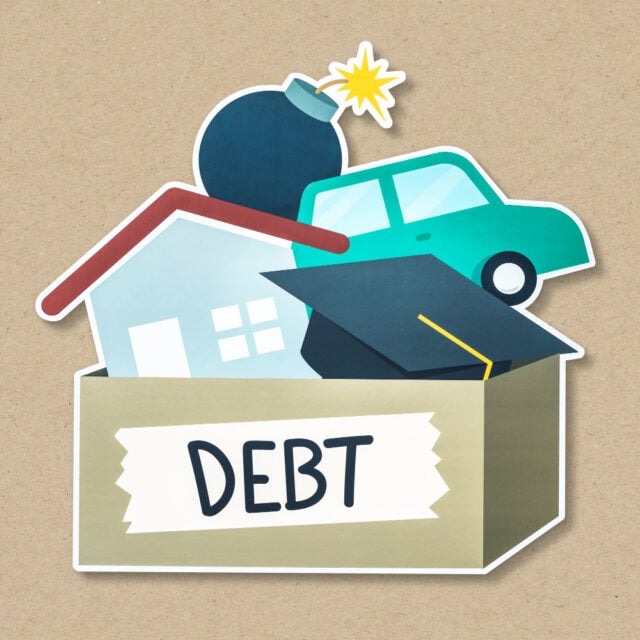
Table of Contents
- Understanding Debt Consolidation
- Common Debt Consolidation Methods
- Evaluating Your Financial Situation
- Pros and Cons of Debt Consolidation
- Steps to Consolidate Your Debt
- Potential Pitfalls to Avoid
- Alternative Strategies
- Conclusion
Key Takeaways
- Debt consolidation can help simplify and reduce loan payments.
- Choosing the correct method depends on your credit score, income, and debt-to-income ratio.
- Careful evaluation of your financial situation is crucial before consolidating debt.
- Beware of scams and high fees—always read the fine print and consult reputable resources.
- If consolidation isn’t right for you, alternatives such as credit counseling and debt settlement are available.
Understanding Debt Consolidation
Debt consolidation is the process of combining multiple debts into a single, manageable loan—typically one with a lower interest rate. This approach makes it easier to keep track of payments and can significantly reduce your overall interest costs over time. Leveraging solutions from reputable sources, such as Symple Lending, can offer borrowers more efficient options for consolidating debts and streamlining their financial obligations.
For individuals juggling high-interest credit card bills, personal loans, or medical bills, debt consolidation can offer a clear path to regaining financial control and peace of mind. The key is to evaluate if combining debts into one payment reduces stress and financial strain without increasing your long-term repayment costs.
Common Debt Consolidation Methods
- Personal Loans: These unsecured loans allow borrowers to pay off existing debts with a new loan, often at a lower fixed interest rate. Payment terms and interest rates are set up front, making budgeting easier.
- Balance Transfer Credit Cards: Special credit cards offer an introductory period of 0% APR to transfer and pay down existing balances, typically within 12–18 months.
- Home Equity Loans: Borrowers use their home as collateral to secure lower interest rates, but this method comes with the risk of losing their home if they default.
- Debt Management Plans (DMPs): Non-profit credit counseling agencies negotiate with creditors to lower interest rates and consolidate payments into one monthly deposit.
It’s imperative to compare each option based on your eligibility, credit health, and the amount of debt. Additionally, seeking guidance from experts like Symple Lending can help you navigate these choices and understand the real costs and benefits based on your financial profile. Taking time to evaluate these factors can prevent you from committing to a plan that may not align with your long-term goals. Careful planning ensures that your chosen strategy truly supports financial stability and debt reduction.
Evaluating Your Financial Situation

Before you choose a debt consolidation strategy, take an honest look at your finances. Consider the following:
- Credit Score: This number largely determines the interest rates and terms you’ll qualify for. Generally, higher scores unlock better options.
- Debt-to-Income Ratio (DTI): Lenders use this figure to measure your ability to manage payments. Calculate this by dividing your total monthly debt payments by your monthly income.
- Budget: Review your income, fixed expenses, and discretionary spending. A solid budget is essential for committing to a repayment plan and identifying opportunities for cost-cutting.
For more information about budgeting and debt strategies, reference resources from the Consumer Financial Protection Bureau (CFPB). You may also consider reaching out to nonprofit credit counseling services, which often provide affordable or free financial guidance. Gaining a thorough understanding of your choices can help you sidestep expensive errors and select the strategy that aligns best with your long-term goals.
Pros and Cons of Debt Consolidation
Debt consolidation has clear advantages, yet it’s not right for everyone. Understanding the benefits and limitations will help you decide if it aligns with your financial goals.
- Pros:
- One monthly payment simplifies debt management.
- Lower interest rates can lead to significant savings and faster repayment.
- Fixed payments foster discipline and support long-term budgeting.
- Cons:
- Some options require assets as collateral, risking property loss.
- If the consolidated loan extends over more years, you might end up paying more total interest.
- Debt consolidation does not address underlying habits that led to debt, making long-term discipline essential.
Steps to Consolidate Your Debt
- Assess Your Debt: Record the balances, rates, and payment amounts for each debt.
- Research Options: Review the offerings and requirements of various methods, such as personal loans, balance transfers, and DMPs, to find the best approach for your circumstances. For a detailed overview of how these strategies work, Investopedia provides a helpful guide on debt consolidation.
- Check Eligibility: Each product or service has minimum qualifications, commonly reliant on creditworthiness and income.
- Apply for a Loan or Program: Collect necessary documentation, such as proof of income and credit reports, then apply.
- Implement a Repayment Plan: Once accepted, stick to your repayment schedule to avoid late fees and further debt accumulation.
Potential Pitfalls to Avoid
Not all debt consolidation offers are created equally, and some may ultimately worsen your financial situation. Watch out for:
- Scams: According to industry surveys, nearly half of all consumers looking at debt consolidation encounter fraudulent schemes. Avoid any company promising instant results or requiring upfront fees.
- High Fees: Origination fees, balance transfer fees, and prepayment penalties can add up. Constantly scrutinize terms and conditions.
- Extended Terms: Spreading payments over a longer term might look appealing, but it often means paying more interest overall.
Alternative Strategies
Debt consolidation isn’t the only solution. If it doesn’t match your scenario, consider these alternatives:
- Debt Settlement: Negotiate with creditors to pay a lump sum that is less than the total amount owed. This can reduce your debt load, but it may also harm your credit score.
- Credit Counseling: Certified credit counselors can help you develop a viable plan for tackling your debt. Many non-profit agencies offer free consultations and ongoing support.
- Budget Overhaul: Adjust spending habits, set new budget constraints, and redirect freed-up funds to pay down balances faster.
Conclusion
Debt consolidation can serve as a powerful tool for organizing and reducing your debt—if chosen wisely and managed with discipline. Understanding the range of options, evaluating your unique financial situation, and avoiding common mistakes are essential steps to making consolidation work for you. For many, this journey is made even smoother with support from organizations and their network of financial professionals, ensuring that you’re informed as you work toward financial stability and future prosperity.
Disclaimer
The information contained in South Florida Reporter is for general information purposes only.
The South Florida Reporter assumes no responsibility for errors or omissions in the contents of the Service.
In no event shall the South Florida Reporter be liable for any special, direct, indirect, consequential, or incidental damages or any damages whatsoever, whether in an action of contract, negligence or other tort, arising out of or in connection with the use of the Service or the contents of the Service. The Company reserves the right to make additions, deletions, or modifications to the contents of the Service at any time without prior notice.
The Company does not warrant that the Service is free of viruses or other harmful components












